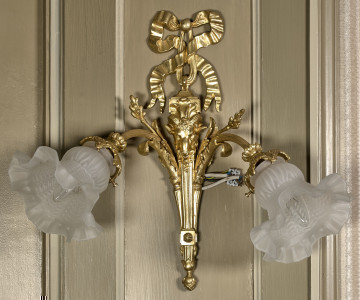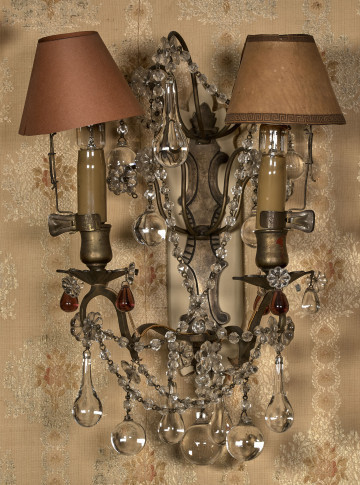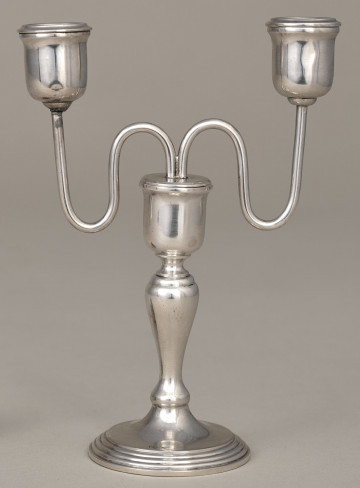
Two-arm wall lamp
19th (?) century
Castle Museum in Łańcut
Part of the collection: Lampy, żyrandole i kinkiety
Ampla is a bowl-shaped hanging lamp, open at the top. It was already used in ancient Rome and became most popular in the 19th century. Most amplas were made of alabaster, porcelain or glass. Alabaster is a fine-grained variety of gypsum that is easy to work with and is characterised by high light transmission and a variety of colours. In sculpture, it was used as far back as in the Antiquity, but it also served in manufacturing lamps. The ampla in question is designed in Classicism style, dates back to early 19th century, it is electrified and it belonged to the former owners of Łańcut. It has the shape of a deep conical bowl with a tapered rim, decorated with floral ornamentation. The bottom of the bowl is decorated with radially arranged stylised leaves ending in a cone. On the body there is an applied ornament of lying lions facing each other, their tails passing into a volute leaf and flower ornament. Between the lions, vertically placed stylised acanthus leaf (three leaves), each of the leaves has three chains attached, joining by their tops into a plate – rosette. A thick chain is attached to the rosette, it serves as the main suspension of the lamp. Light bulbs inside the bowl. The lamp is made of carved alabaster, ornaments and chains are chiselled and made of gilded bronze. The lamp decorates the Hall under the Zodiac on the first floor of the castle.
Object type
Lamps, chandeliers and sconces
Material
alabaster
Creation time / dating
Owner
Castle Museum in Łańcut
Identification number
Location / status

19th (?) century
Castle Museum in Łańcut

20th century
Castle Museum in Łańcut

Castle Museum in Łańcut
DISCOVER this TOPIC
National Museum in Lublin
DISCOVER this PATH
Educational path